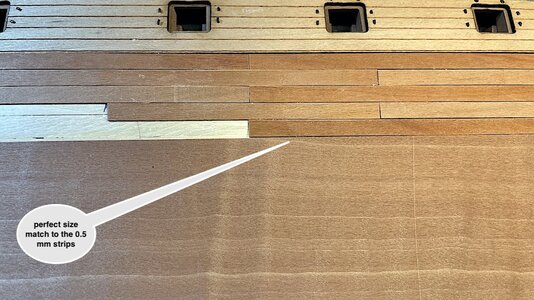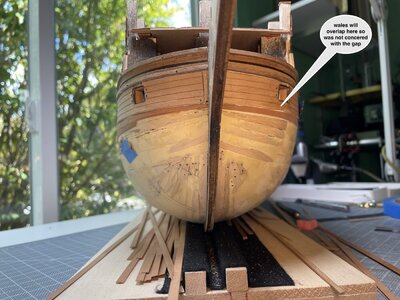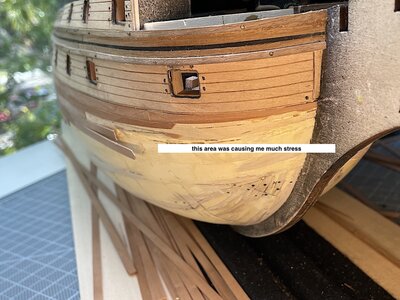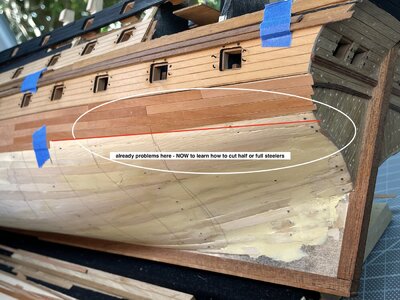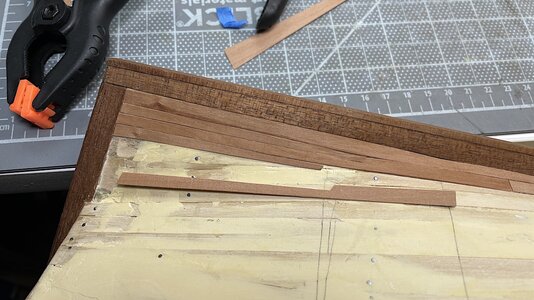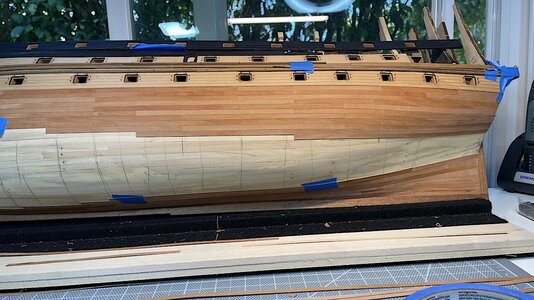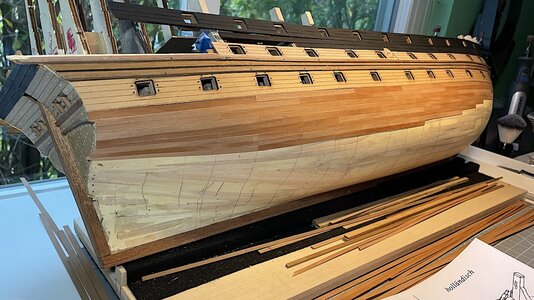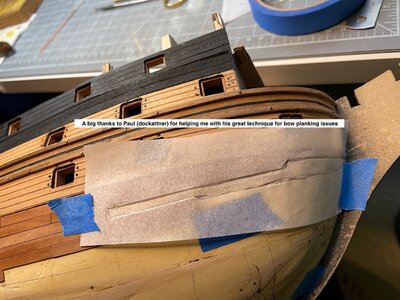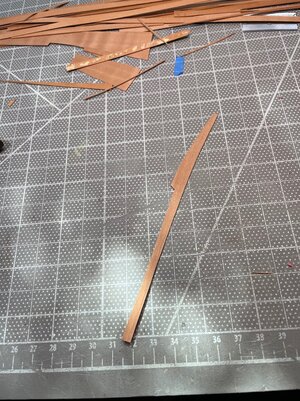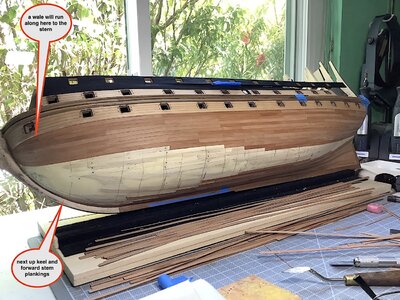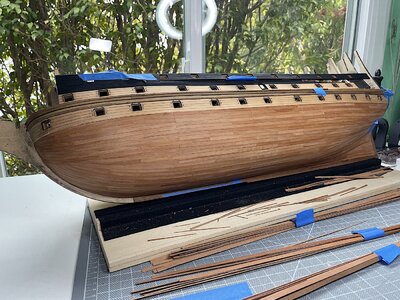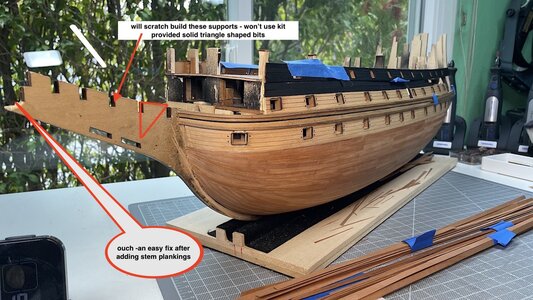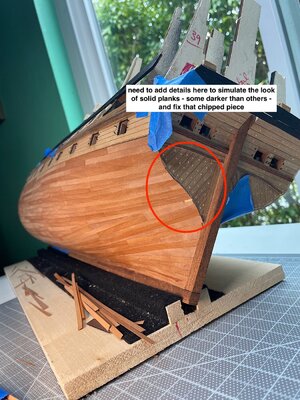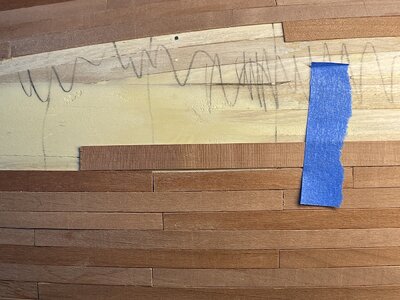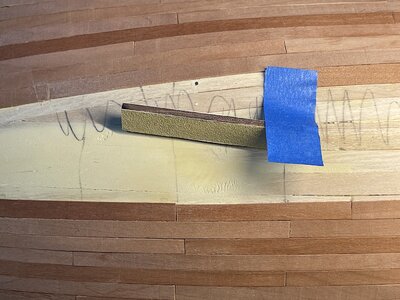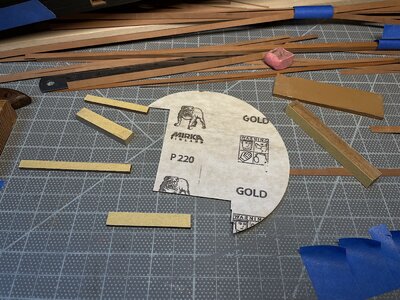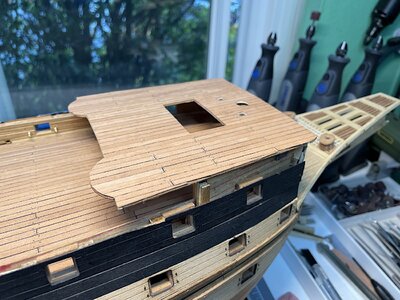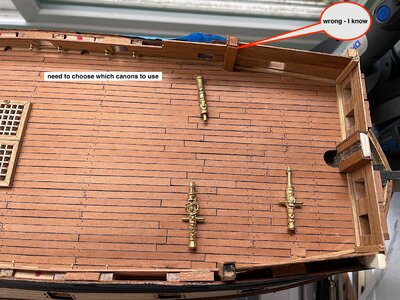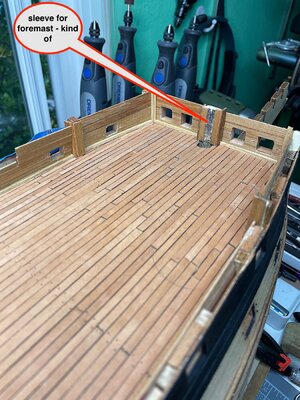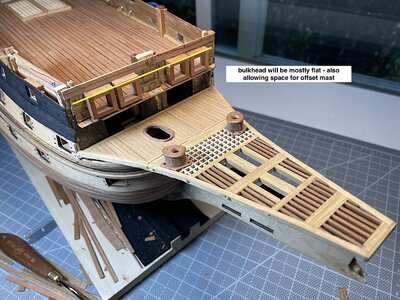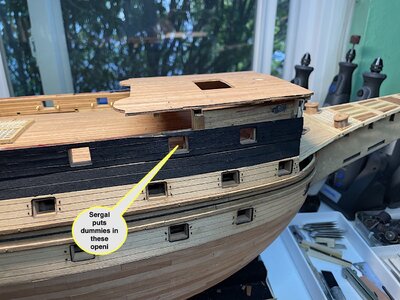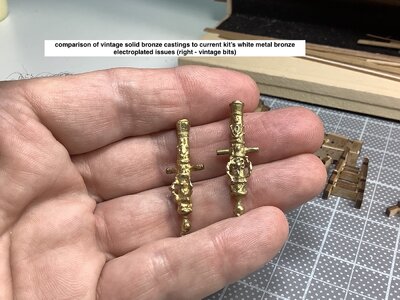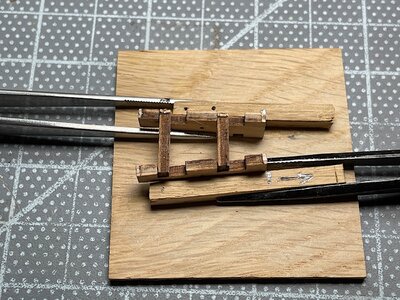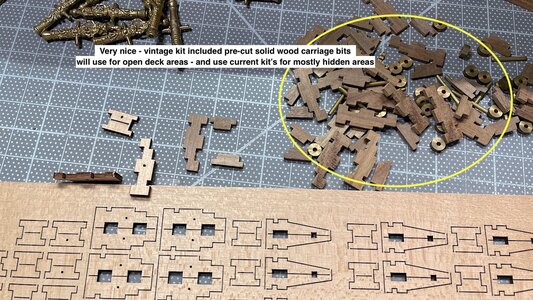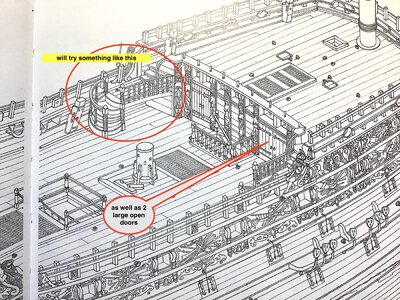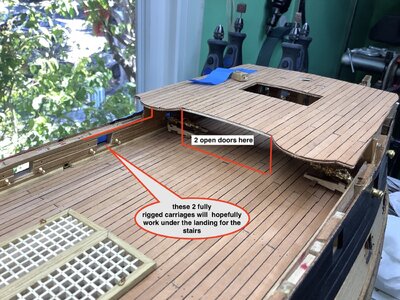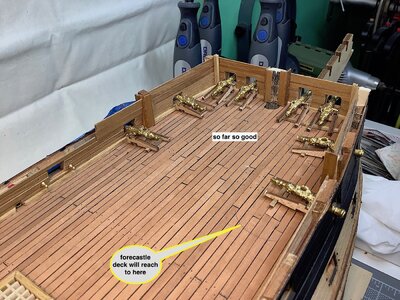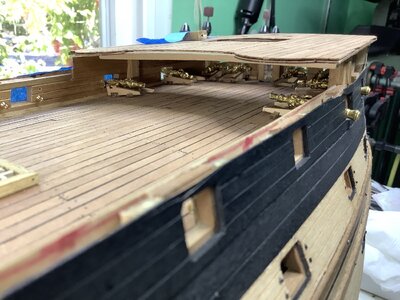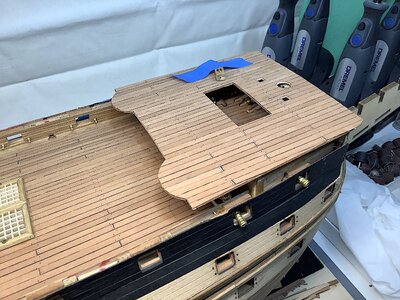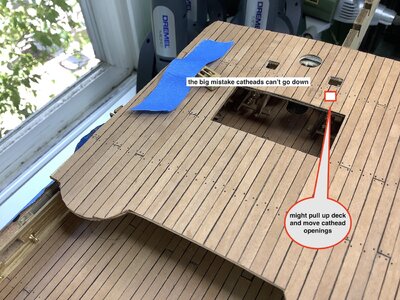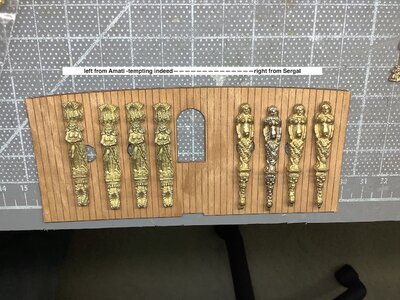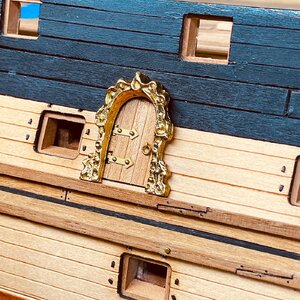John, I have been given SO MUCH help on this forum that I am delighted that I might get to finally contribute to another person's build.
Here is how I created the specially shaped pieces of sheet veneer at the bow:
Working down from the wale I used strip material for as long as I could (until the edge bending became more than the material could tolerate). At some point (in my case it was only 2 or 3 strips below the lowest wale) you will notice the material is beginning to 'clinker' - that's when you switch over to the sheet veneer.
1. I would lay a normal strip along the hull of the ship until the piece wanted to start bending up near the curve of the bow...
2. I would terminate the strip at that point and then use a piece of paper to create a template for the shape needed...
3. I found it was helpful to 'imprint' the lower edge of the last successfully placed piece onto the paper by pressing the paper along the bottom edge of the last strip on the ship using my finger or a stick of wood...
4. I then cut along that imprinted crease in the paper (marking it with a pencil first helped me see the crease better)...
5. I would then keep test fitting the paper refining its shape until it was really close...
6. At the place where you join the piece you are making and the strip along the hull it should be 5 mm wide (or whatever your plank width is). I would then draw a pencil line that begins at 5 mm and tapers according to the needs of the narrowing hull. At the stem some pieces were as narrow as 2.5 mm. I would then cut the paper along that tapering line...
7. I then test fit the final paper template one more time refining as needed...
8. I then carefully traced the paper shape onto the veneer keeping the grain of the sheet veneer running in the direction of the strip as much as possible. You will still need to carefully bend the strip into place and it is
very fragile across the grain...
9. I chose to cut out the piece using the tip of a very new #11 blade making several passes to cut through the wood... A light hand helped me follow my outline. You can't use a straight edge because the piece you are making will be curved. See this post:
https://shipsofscale.com/sosforums/threads/vasa-1-65-deagostini.5904/post-140381
10. I then used a sanding stick to refine the shape test fitting over and over again...
11. I would then accidently break the piece while bending it into place and I would start all over again (
always save the paper template!). There may have been a profanity muttered at that point but that's really none of your business...
As you can see I have not done you any favors. This is labor intensive and takes practice. After a bit I got quite adept at the process and then things went more smoothly.
I hope this works for you! I will be cheering you on!





 Thank You indeed.
Thank You indeed.